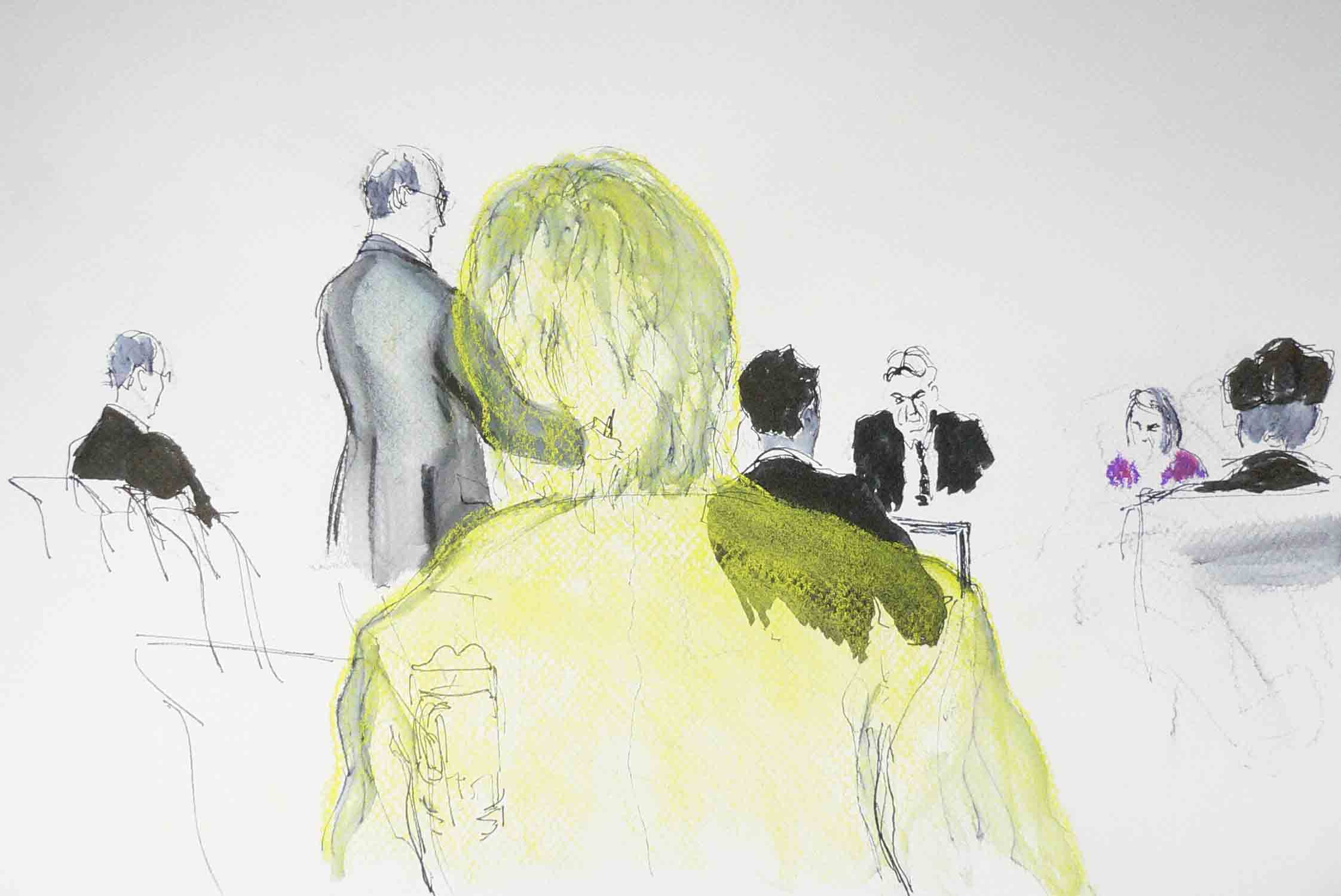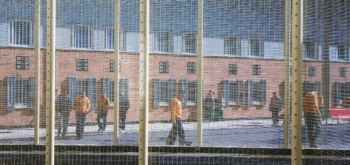Poor, bad and truly atrocious: Directing the jury on gross negligence manslaughter

Sketch by Isobel Williams www.isobelwilliams.blogspot.co.uk
On February 5 2010 James Hughes underwent elective knee replacement surgery at the Clementine Churchill Hospital in London. He subsequently developed post-operative bowel complications and was referred to Mr David Sellu, an experienced consultant surgeon specialising in colorectal medicine and surgery. Mr Hughes underwent further surgery in relation to his perforated bowel on February 15, but died the following day. His death led to an internal hospital inquiry and then an inquest. As a result of answers Mr Sellu gave at the inquest the Coroner suspended the hearing and referred the matter to the police. After a police investigation Mr Sellu was charged and a trial at the Central Criminal Court followed.
The prosecution case was that a series of missed opportunities and serious errors of judgement by Mr Sellu caused Mr Hughes’s unnecessary death. In short, Mr Sellu had culpably failed to recognise the seriousness of Mr Hughes’s condition and respond appropriately. On November 5 2013, a jury convicted Mr Sellu of gross negligence manslaughter by a majority of 10-2. He was sentenced to two and a half years’ imprisonment.
- Earlier this month David Sellu had his manslaughter conviction quashed and told the BBC ‘justice has not been done’ for the patient’s family. The surgeon had served 15 months of a two-and-a-half-year prison term for manslaughter by gross negligence. The Court of Appeal ruled the November 2013 conviction was not safe. Sellu said there was a range of factors that contributed to his death. ‘I think for the sake of that poor man and his family justice has not really been done,’ he said. ‘It has been retribution, but I don’t really believe that they’ve been served as well as they should have been.’
David Sellu’s conviction caused great concern at the time in medical circles. Some saw it as marking a more hostile approach on the part of the CPS, and indeed juries, to medical errors causing death. His trial counsel advised against an appeal. In 2014, Mr Sellu contacted new counsel, who drafted and submitted grounds of appeal.
The appeal grounds fall into three broad groups. The first concerns fresh evidence. That evidence related to the extent to which Mr Hughes’ medical condition may have contributed to his death, to the use of a scoring system (P-POSSUM) to give a statistical probability of death at various points in time, and to new research which questioned the relationship between a delayed operation and a poor outcome for patients such as Mr Hughes. The Court of Appeal rejected this ground on the basis that there was no reasonable explanation for the failure to adduce the material then available, and that the material did not affect the safety of the conviction in any event.
Second, the Court considered the approach taken to causation. The Court assessed whether there came a point where Mr Hughes’s condition had deteriorated to such an extent that nothing Mr Sellu could have done would have made any difference and thus he could not be blamed for Mr Hughes’s death.The Court accepted the defence arguments on the effect of the ‘but for’ test in this context, but (remarkably) found that the judge had directed the jury sufficiently on the issue. A second argument on causation was whether, on the facts of the case, the jury should have been directed that they must agree on one particular facet of the negligence alleged, in accordance with R v Brown (1984) 79 Cr App R 115. The Court held that on the facts of the case there was no need for a Brown direction.
The third ground related principally to the directions given by Nicol J on the grossness element of the offence. First, the Court noted with some concern that the experts had been invited to express an opinion on the ultimate issue of whether Mr Sellu had been grossly negligent.
The Court of Appeal deprecated that practice. To make matters worse, those expert conclusions had featured prominently in the summing up, but had not been the subject of specific directions by the judge, which they should have been. Accordingly, there was a danger that the jury may have simply accepted the experts’ opinions on the ultimate issue in a way that supplanted the jury’s role. As the Court noted, grossness is ultimately a jury question not a medical one.
Further, the Court held that the jury directions as to what amounted to ‘gross negligence’ were insufficient. The trial judge should have gone further than merely asking the jury to determine whether Mr Sellu fell below the standard ‘in a way that was gross or severe’. While the Court of Appeal stressed that there was no required form of words, the jury must be given sufficient guidance to understand the concept of grossness accurately.
The Court cited with apparent approval various well-known first instance directions, including the now familiar passage from the summing up of Langley J in Misra [2005] 1 Cr App R 21.
In this context, the decision addresses an issue of real significance, not just for lawyers but for society more broadly. It is one which arises whenever the inadvertent mistakes of individuals at work cause death, the medical environment being the most significant: what kind of error is sufficient for a jury to convict of gross negligence manslaughter?
Until now, there has been very little authority on this question. In the leading case on gross negligence manslaughter, R v Adomako [1995] 1 AC 171, the House of Lords did not provide any useful guidance on what amounted to gross negligence, merely stating that it was ‘supremely’ a jury question which required them to decide ‘whether having regard to the risk of death involved, the conduct of the defendant was so bad in all the circumstances as to amount in their judgment to a criminal act or omission’ (per Lord Mackay CJ, at 187).
Nevertheless, a common practice had grown up of first instance judges giving the jury quite firm guidance on what sort of conduct might constitute gross negligence. It became routine for defence, and indeed prosecution counsel to furnish trial judges with a series of examples from other first instance summings-up (such as that from Misra), to act as templates for the legal directions. However, if the judge was not minded to follow those other directions, there was no clear authority to rely upon.
In Mr Sellu’s case the jury was given no guidance on the meaning of ‘gross negligence’. This was held to be unsatisfactory. As one of the appeal court judges noted during the course of oral submissions, the meaning of ‘gross’ to a young person today will be very far removed from the meaning it is intended to bear in the context of this criminal offence. While the Sellu case does not prescribe precisely how a jury needs to be directed on grossness, it does confirm that some significant help for the jury is required. The jury needs to understand that manslaughter is not simply about mistakes, even very serious mistakes, that cause death. Proof of the offence of homicide requires proof of conduct that is of a different degree of culpability.
Climate of fear
The case may have wider implications. Many distinguished and senior doctors, as well as some criminal lawyers, have raised concerns about the effect of prosecuting doctors and other medical professionals for offences of manslaughter, particularly in cases where the death is likely to have resulted from an accumulation of errors by a number of individuals and indeed, at an institutional level. For example, Sir Norman Williams, a former President of the Royal College of Surgeons, recently said that the seeming increase of prosecutions of doctors for gross negligence manslaughter runs the risk of creating a ‘climate of fear’ among medical practitioners, whereby they become unwilling to take high risk cases.
This case will require the CPS’s reasonable prospects test to be addressed on the basis that the trial judge will give the jury clear guidance as to the very serious nature of the negligence to be proved in order to prove manslaughter, almost certainly in emphatic terms. A likely consequence, and for many a happy one, is that fewer such cases are brought. It is the view of many, in the medical world and beyond it, that the threat that clinical errors may result in prosecution and imprisonment does absolutely nothing to promote the welfare or safety of patients, let alone the well-being of medical professionals.
Thanks to Chris Sykes and Nadesh Karu, pupils at QEB Hollis Whiteman, for their help in the preparation of this article






